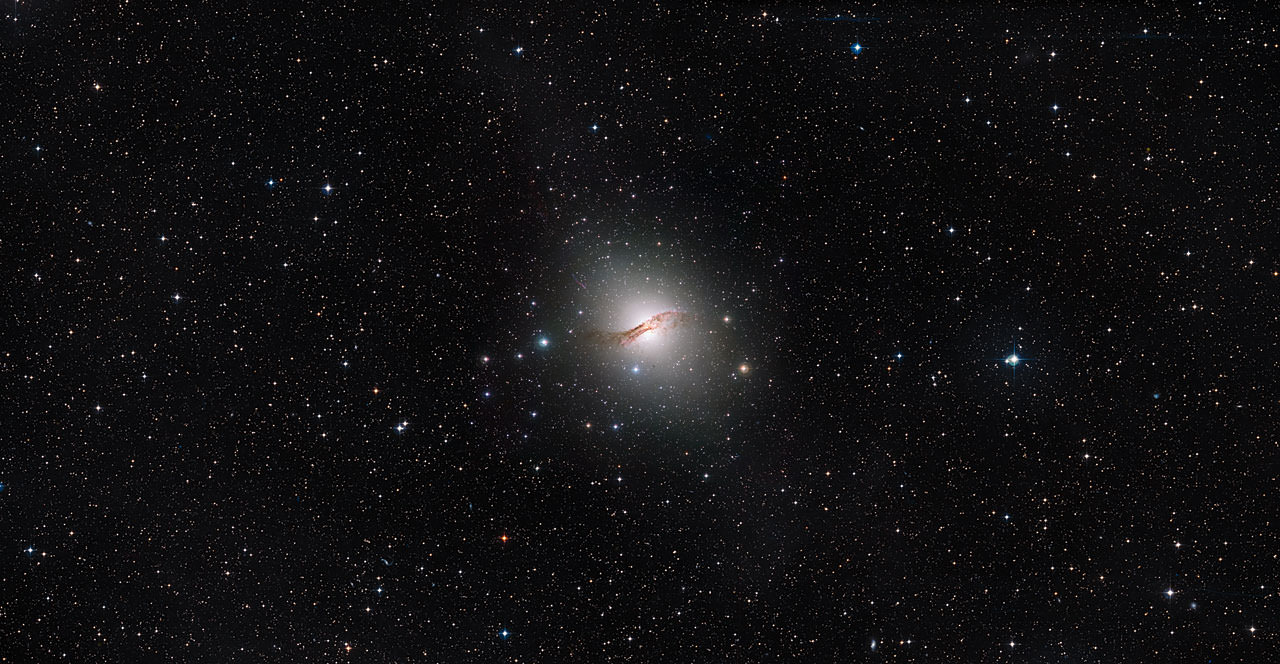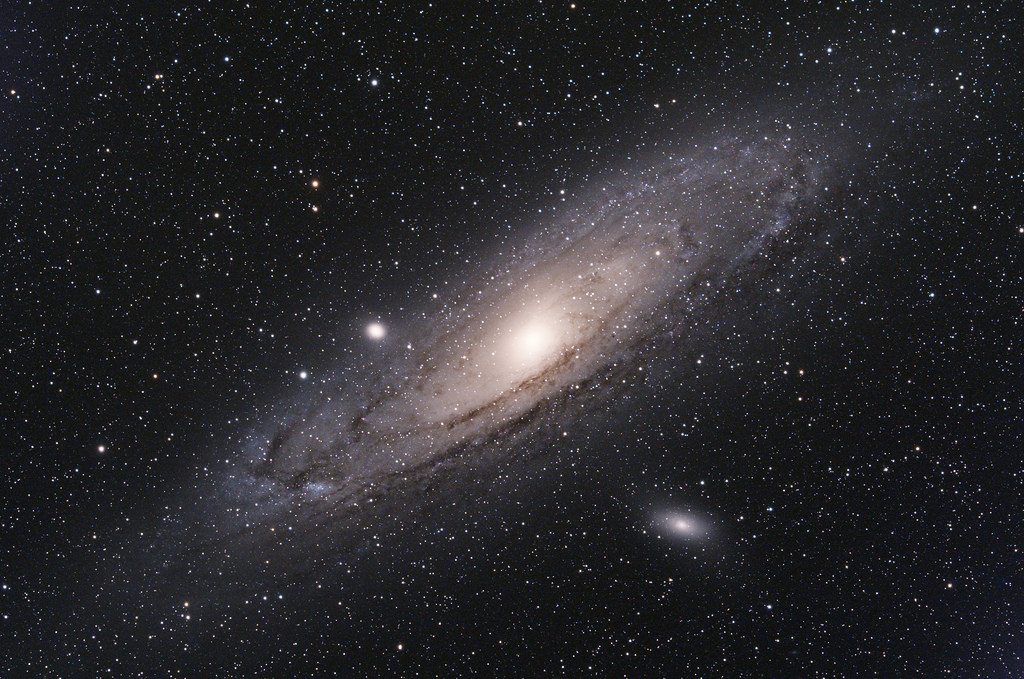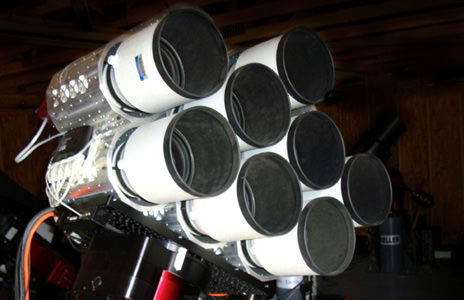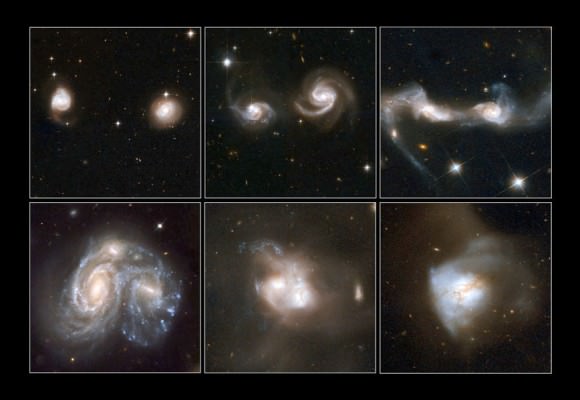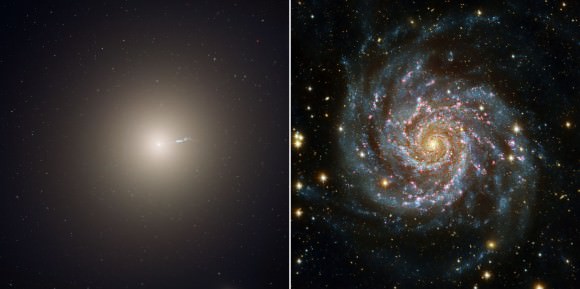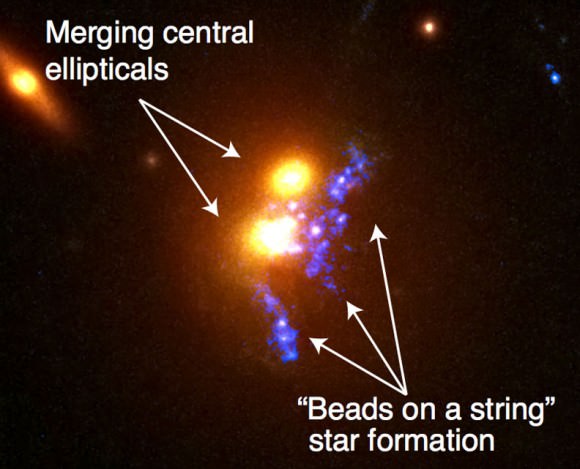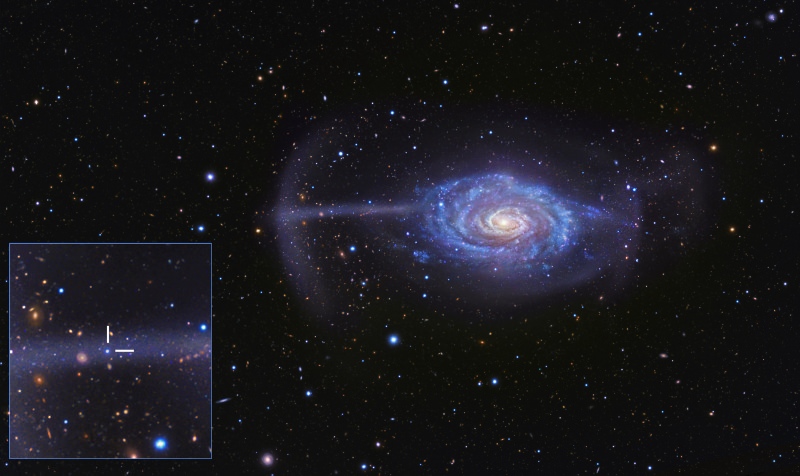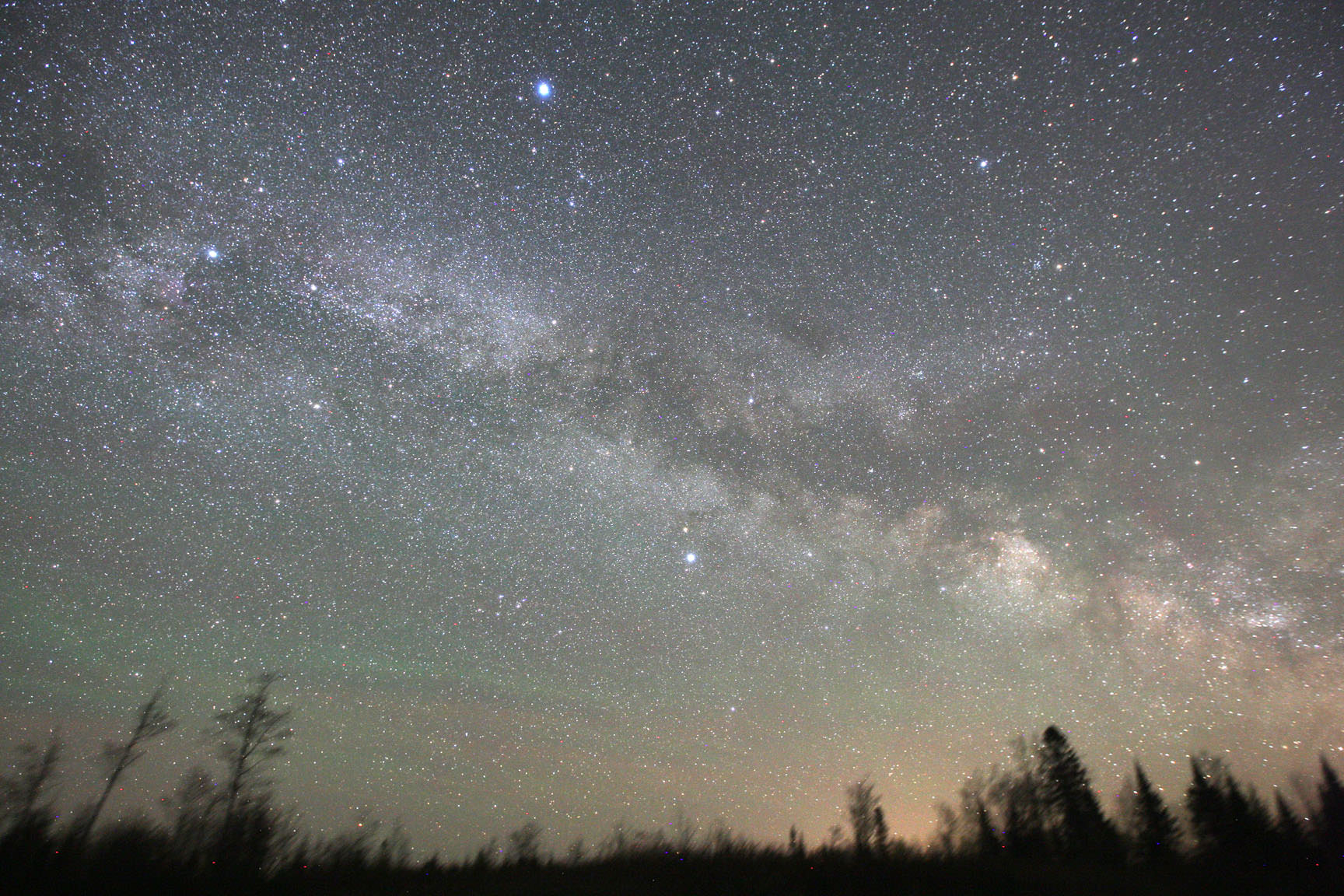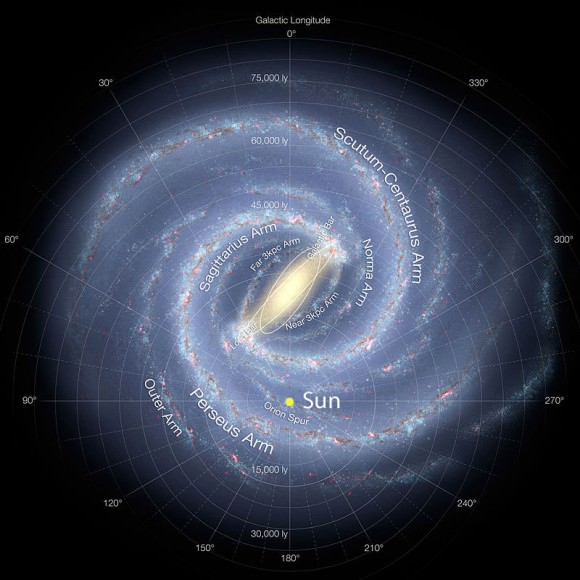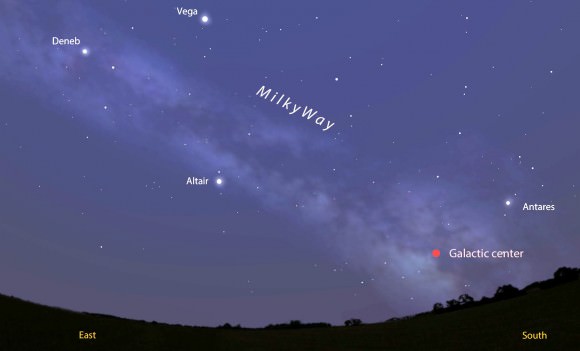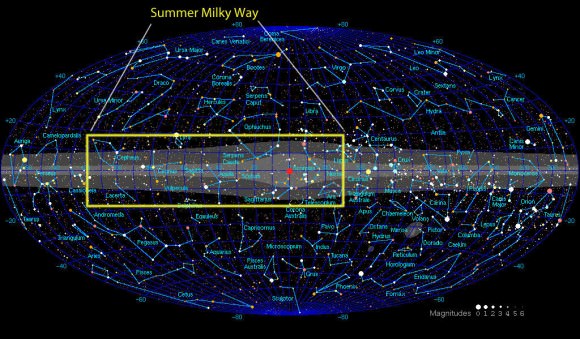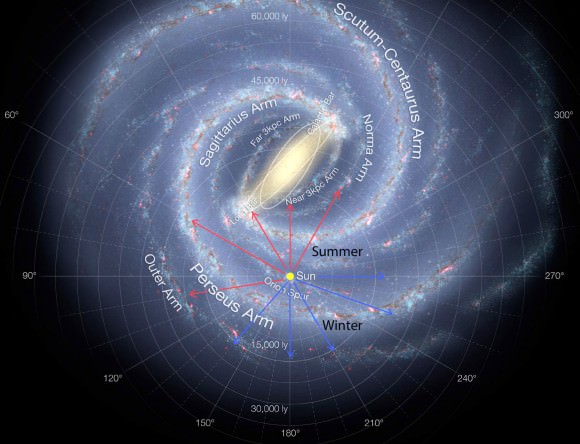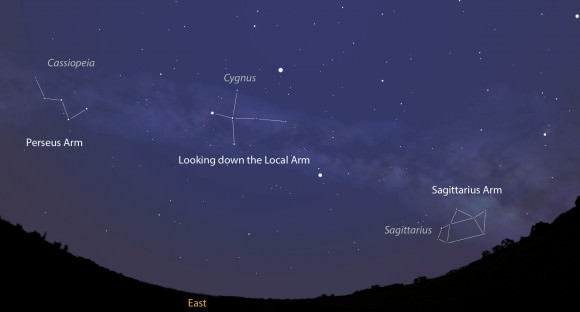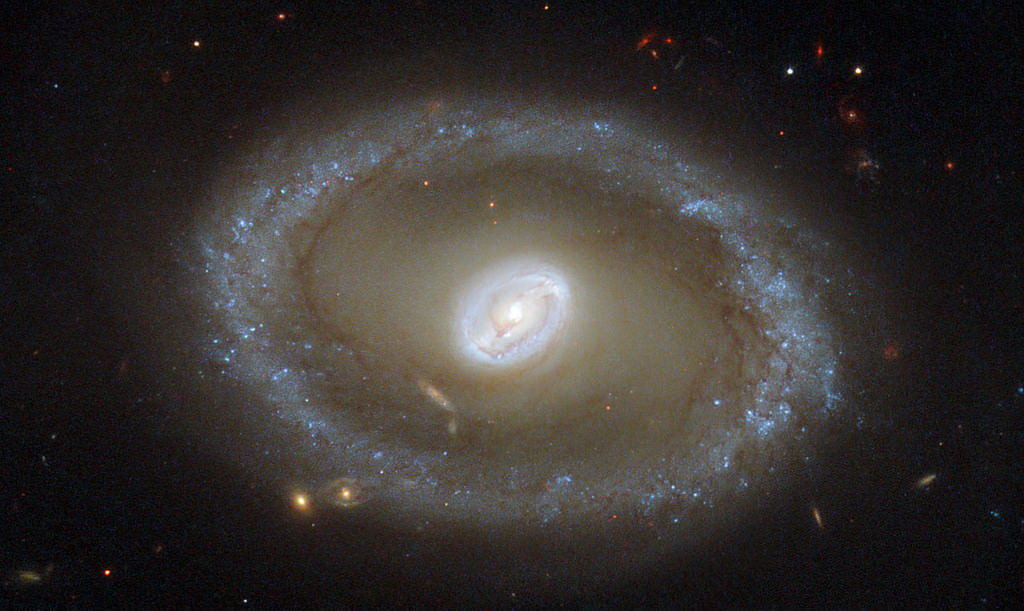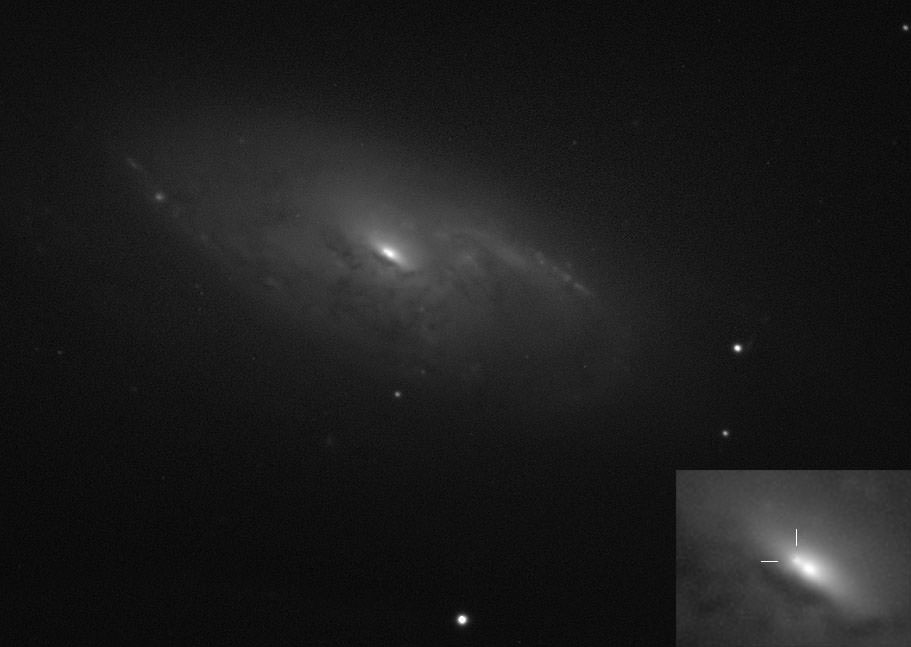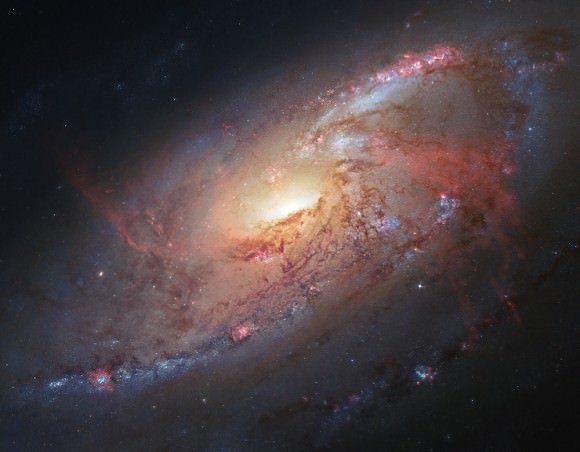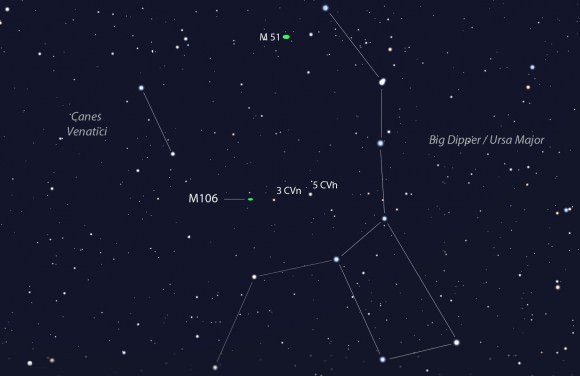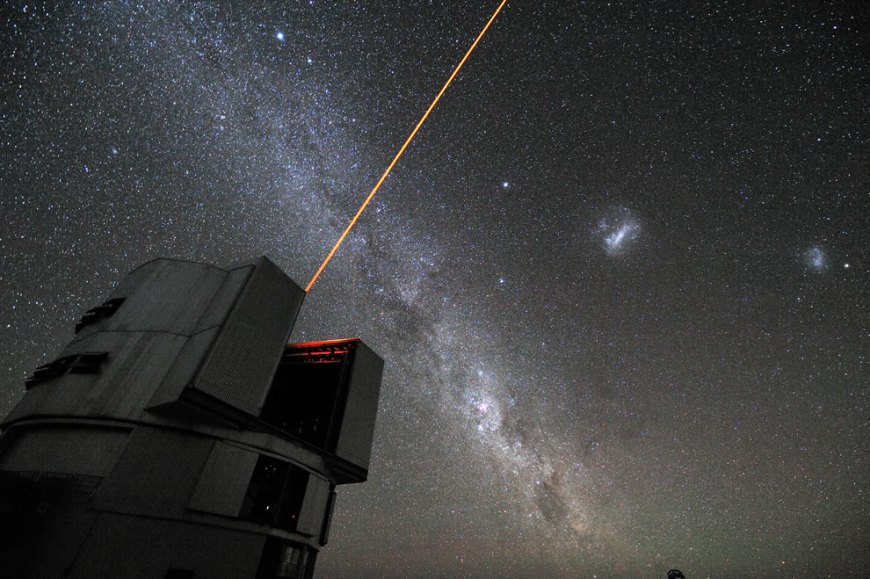Centaurus A — that popular target for astrophotographers in the southern hemisphere — has a much wider halo than expected, astronomers revealed. Turns out the galaxy’s ghostly glow is about eight times the apparent width of the full moon in the sky. Examining this halo in more detail could reveal much about how galaxies come together, astronomers said.
It’s relatively easy for scientists to spot the halo around the Milky Way since we are a part of it, but it’s much harder to observe them in other galaxies because they are so faint. Looking at Centaurus A (10 million to 16 million light-years away) required the power of two Hubble Space Telescope instruments: the Advanced Camera for Surveys and the Wide Field Camera 3.
“Tracing this much of a galaxy’s halo gives us surprising insights into a galaxy’s formation, evolution, and composition,” stated lead author Marina Rejkuba of the European Southern Observatory in Germany. “We found more stars scattered in one direction than the other, giving the halo a lopsided shape — which we hadn’t expected.”
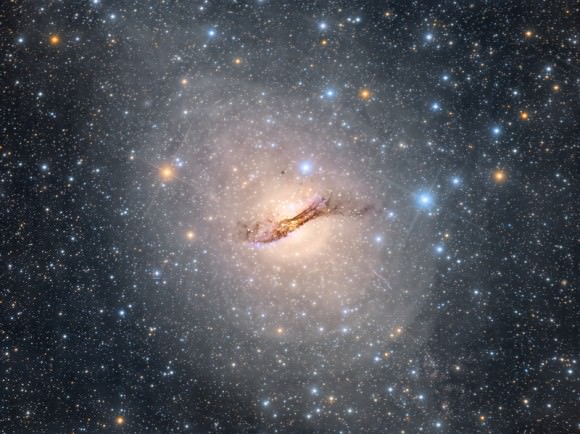
The astronomers examined a region that is about 295,000 light-years across — more than double the diameter of the Milky Way’s 120,000 light years. The stars inside the glow appeared to have abundant heavier elements, even in the fringes of the galaxy — a contrast to the much lighter hydrogen and helium that are found in the fringes of the Milky Way and nearby spiral galaxies.
It’s possible the heavier stars arose because Centaurus A merged with a spiral galaxy long ago, removing stars from the intruder and sticking in Centaurus A, the astronomers said.
“Even at these extreme distances, we still haven’t reached the edge of Centaurus A’s halo, nor have we detected the very oldest generation of stars,” stated co-author Laura Greggio of Italy’s INAF (Istituto Nzaionale de Astrofisica, or National Institute for Astrophysics).
“This aged generation is very important. The larger stars from it are responsible for manufacturing the heavy elements now found in the bulk of the galaxy’s stars. And even though the large stars are long dead, the smaller stars of the generation still live on and could tell us a great deal.”
The results are available in Astrophysical Journal Letters and in preprint version on Arxiv.

